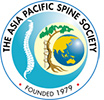Transforaminal lumbar interbody fusion (TLIF) is a type of spinal fusion procedure in which bone graft is placed between the affected lumbar vertebrae through a posterior incision on the patient’s back. The term Transforaminal lumbar interbody fusion itself indicates:
Minimally invasive surgical techniques can be employed for TLIF. Minimally invasive spinal surgery is safe with more advantages than the traditional open spine surgery. Minimally invasive surgery requires a small incision (reduced scar) and employs muscle dilation for a more precise operation without affecting or cutting the surrounding muscular and vascular tissues. Consequently minimally invasive technique results in a faster recovery.
TLIF is a modification of the posterior lumbar interbody fusion (PLIF) where anterior aspect of approaching the spine is not employed. This helps to overcome various complications such as alteration of neural structures, damage to related ligaments, excessive bone removal, biomechanical instability, and early mobilization problems.
Indications
Based on the spinal condition, age, health, degree of activity and complete medical history of the patient, the surgeon may recommend TLIF as a treatment option. Your surgeon will recommend this procedure only if you are not responding to the conservative treatment methods such as rest, physical therapy and medications.
Your surgeon may endorse TLIF if you are suffering from any of the following spinal instability conditions:
- Degenerative disc disease
- Spondylolosthesis
- Spinal stenosis
The common symptoms associated with lumbar spinal instability are pain, numbness, and muscle weakness in the low back, hips and legs. Therefore one should always consult their surgeon or spinal care provider before making any decision regarding surgery.
Procedure
The basic steps involved in a transforaminal lumbar interbody fusion are as follow:
- A small incision (3 cms) is made in the skin on your back over the affected vertebrae
- Muscles encircling the affected spine are retracted to make approach easy
- Lamina covering the vertebra is removed to view the nerve roots
- Facet joints (situated over nerve roots) may be undercut or trimmed to provide more space to the nerve roots
- Nerve roots are moved away to remove the disc material from the anterior region of the spine
- A bone graft is then inserted between the vertebrae
- Then screws and rods are fixed to stabilize the spine
- Finally incision is closed
Recovery
Patients who have undergone TLIF surgery are usually discharged on the same day, but in some cases, hospital stay may be extended. Patients may find correction in some symptoms soon after the surgery, and other symptoms may gradually recover with time.
Your surgeon may recommend a few specific post-operative instructions for a fast and better recovery. Generally patients may return to their routine activities within weeks after surgery.
Risks and complications
Although transforaminal lumbar interbody fusion surgery is a safe procedure, some complication may arise under certain circumstances. The common and possible complications associated with TLIF surgery are as follows:
- Infection
- Nerve damage
- Blood clots
- Blood loss
- Bowel or bladder problems
- Incomplete fusion of the bone graft (spinal fusion)
In rare cases, if the bone graft does not fuse or regenerate properly then revision surgery may be required.
Please consult your physician for a complete list of indications, warnings, precautions, adverse effects, clinical results and other important medical information that pertains to a TLIF procedure.















